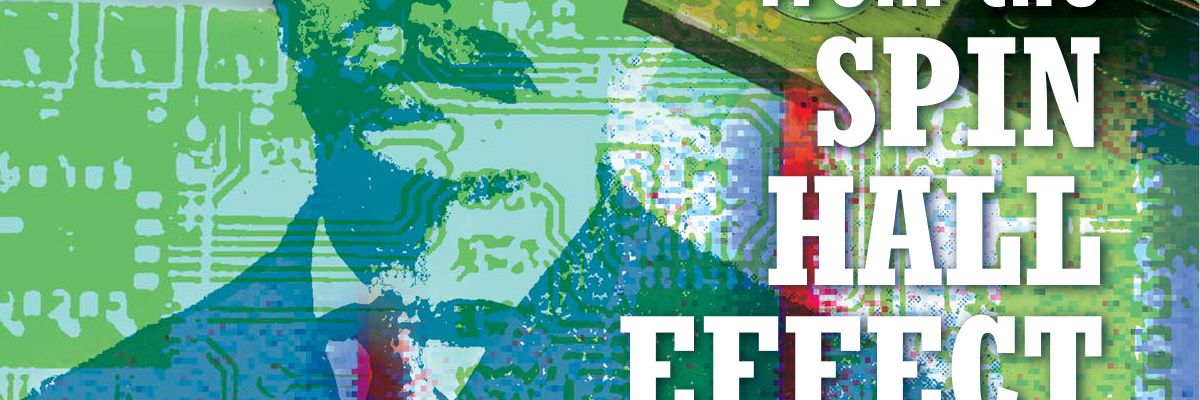
Thousand times faster microelectronic memories? A realistic prospect thanks to Czech scientists AV ČR
Thousand times faster microelectronic memories? A realistic prospect thanks to Czech scientists AV ČR
Fri Aug 11 14:12:55 CEST 2017
Over the past few years, the team of physicist Tomáš Jungwirth has been exploring extremely fast microelectronic memories that operate on entirely new principles, compared to present memory technologies. Following the last year publication in Science of a breakthrough experimental work of the team in this emerging field, a European project ASPIN is about to start now. It is coordinated by the Institute of Physics of the Czech Academy of Sciences, and the four-year grant of nearly four million Euro was awarded within the Future and Emerging Technologies scheme of Horizin2020. Besides the Institute of Physics and the Faculty of Mathematics and Physics of the Charles University, the project partners include three Max Planck Institutes and University of Mainz in Germany, University of Nottingham in the UK, and a Spanish company IGSresearch Ltd.
“There is many unknowns in this emerging field but one point seems clear: our new memory concept offers writing speeds that exceed thousand times present computer memories,“ says professor Tomáš Jungwirth, the head of the Department of Spintronics and Nanoelectronics of the Institute of Physics. Besides the exceptional speed, he also points out other potential merits that resemble functions of the brain.
“Present information technologies are based on binary coding of ones and zeros. They are in many respects more efficient than the brain, however, computers still underperform in tasks like pattern recognition. Our devices could help in the field called artificial intelligence that aims to combine the merits of computers and brain,“ adds Jungwirth.

Schematic principle of an antiferromagnetic memory with electrical readout and switching between distinct antiferromagnetic memory states.
The physical principle of these new memories is based on materials called antiferromagnets. These are non-magnetic on the outside but magnetic inside. Their internal magnetic state can be controlled by electrical current which has become possible due to the last year’s discovery of scientists from the Institute of Physics. Some of these materials like chalcopyrites can be found in nature, others are man-made. As noted by Tomas Jungwirth, we are only at the beginning: the research is still ongoing and, besides the already submitted patents, we are preparing more patent applications within our long-term collaboration with the Japanese company Hitachi.
“Our new concept goes well ahead of present technology capabilities and it is, therefore, difficult to foresee if, when, and in what form it will be implemented in practical applications. However, in our field of spintronics we have examples, like the hard-drive read-heads, where it took only one decade to turn the initial discovery into a mass production technology.“

Czech scientists publish only rarely in the popular magazine Physics Today (July 2017, page 38, http://physicstoday.scitation.org/doi/10.1063/PT.3.3625).
The research community follows closely recent achievements of the team of Tomáš Jungwirth. The paper in Science, currently listed among hot and highly cited papers on Web of Science, was followed this year by publications in other prestigious journal, including Nature Photonics, Nature Communications. The team also published a review in Physics Today which is regarded as the most influential and closely followed physics magazine in the world. In contrast to the paper in Science, showcasing initial experiments performed using complicated laboratory equipment, the follow up work in Nature Communications demonstrated that the new memories can be operated at ambient conditions from a personal computer via the standard USB interface.

The memory chips can be connected to a PC via a USB port as demonstrated in the Nature Communication article (vol. 8, 2017, page 15434, https://www.nature.com/articles/ncomms15434).
„Information technologies are rapidly changing these days: traditionally it was just a computer box sitting on a desk but today we carry it in our pockets, cars, etc. A new information era is emerging, the so-called Internet of Things, and I hope that our devices will find application in these new information technologies. In our USB device we have demonstrated that future applications are not science-fiction but a realistic prospect. This was among the reasons why we got the European grant this year,” adds Tomáš Jungwirth.
Prepared by: Alice Horáčková, Department of Media Communication of the CAS
Translated by: Tomáš Jungwirth
Photo: Tomáš Jungwirth, Institute of Physics of the CAS and Physics Today
